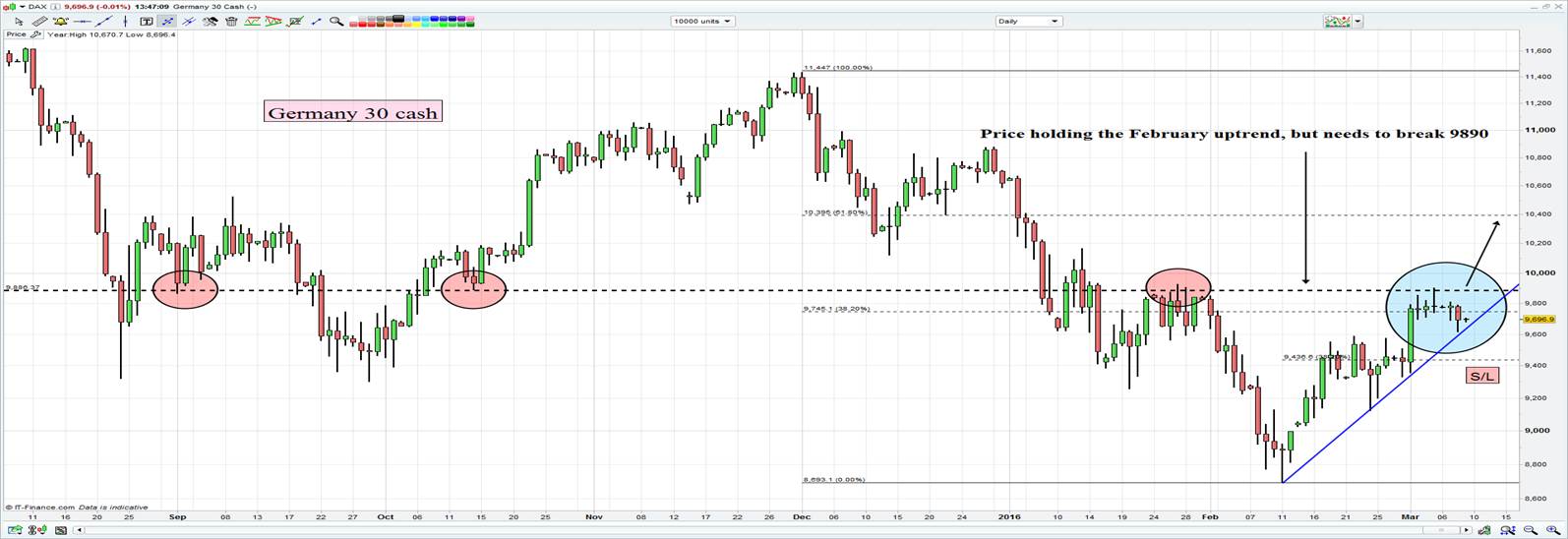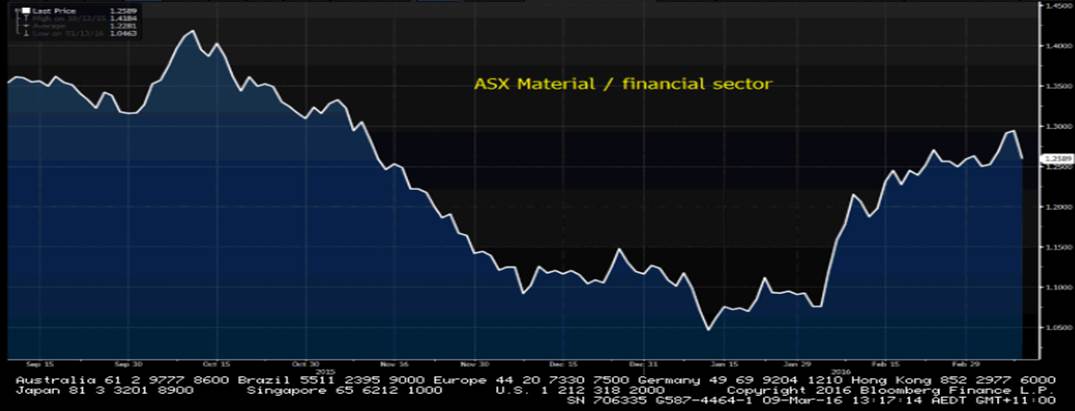Consolidation and reflection seems to be the name of the game after a strong run in commodities and equities as credit spreads continue to tighten. However, the clear concern from clients and traders in general is whether it is time to increase bearish positioning again.
Part of the move higher in risk sentiment has been premised on more accommodative market pricing for future Fed policy. But after the recent moves, we are left with the market pricing a hike in June as a 50/50 bet. Pushing out the curve, eurodollar futures are still pricing just one rate hike per year for the next five consecutive years. The swaps market has the nominal longer-term ‘neutral’ rate at 2.2%, which is some 130 basis points lower than the Fed’s own forecast. Let’s see if the Fed come closer to the market next week, but as things stand market pricing is sanguine and still supportive of risk appetite.
Moves in US fixed income (or, to be fair, anywhere else) pale in comparison to the craziness seen in Japan. Many were fixated yesterday on the 22 basis point drop in the 30-year JGB, which considering it fell from 69 basis points is absolutely staggering! Traders have sold into the move today (30 year JGB is up 10bp today), but there is no doubt that while most are focused on moves in the Nikkei 225 or JPY, what is happening in the Japanese bond market is totally crazy, with over 70% of outstanding debt commanding a negative yield. Recall that last week the Japanese Ministry of Finance issued ¥2.2trillion of 10-year JGBs with a negative yield and, therefore, were effectively paid to issue debt for 10 years! What’s more, the bid-to-cover ratio was strong at 3.2x. Why would anyone pay a government for the use of their capital? Simple. You think yields are going lower and one can make a capital return.
One should also be watching the German 2-year bund as well, which at -56 basis highlights the extent to which the ECB will have to deliver tomorrow to avoid a huge disappointment. Whether we see the same disappointment as 3 December, when the ECB under delivered on market expectations, resulting in a 3% rally in EUR/USD on the day and 3.1% sell-off in the Eurostoxx index, is yet to be seen. Mario Draghi will need to be skilled in controlling the market reaction and traders want to know that the ECB are ready to keep the liquidity going until they reach their mandate. Still, as most strategists have been detailing, EUR/USD is predominately driven by the Fed now and is 80% a play on the USD than EUR.
In equity land, the DAX is one of the more interesting charts about now, with price still holding the February uptrend, but is ever so desperate to break the 9890 - 9900 resistance area. Long entry positions will need to wait for an upside break, and that requires a market who likes what they hear from Mr Draghi et al.

If I am to speculate on the ECB meet, my preference is to trade potential outperformance from peripheral European markets relative to that of the core. This suggests long MIB/IBEX, short DAX/CAC. Another idea would be long Spanish 10-year bonds, short German bunds. As we can see from the Bloomberg chart traders are already warming to this view.

On the idea of “reflection”, the best place to see this is in the ASX materials space. After a 24% rally from January, we saw a classic pin bar reversal yesterday, right on the 200-day moving average, on huge volume. The sector has printed a lower low today and this is about as textbook a reversal as you can get. It would not surprise me to see the sector down 3-5% from here. It’s interesting considering the shaky price action in the Nikkei and China today that the ASX 200 has been more upbeat, with money flowing back into banks. This won’t surprise too much given ASX material/financial sector ratio has moved from 1.0468 times to sit at 1.2580 times and there seems to be a clear switching trade underway.

Ahead of the open we are calling FTSE 6125 unchanged, DAX 9701 +9, CAC 4408 +4
